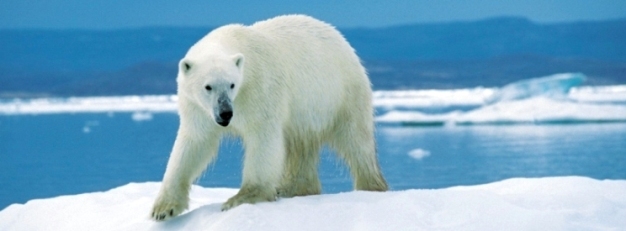« Prev Next »
Rethinking Conservation Values in the 21st Century
Historically, much of the ethical discussion surrounding conservation among philosophers, scientists, and advocates focused on establishing good reasons for caring about the plight of threatened species — and convincing decision makers to adopt policies to protect these populations and their habitats (e.g., Norton 1987, Rolston 1994, Terborgh 1999, Wilson 2002, Foreman 2004, Sarkar 2005). Although there are often disagreements, especially among philosophers, about the ethical reasons for conservation, there is nevertheless a policy consensus in the conservation community to save species threatened with extinction by human activities such as habitat destruction and fragmentation, pollution, and unsustainable harvesting (Norton 1991, Minteer 2009).
Yet, as it has with other discussions of the values and goals of environmental policy, global climate change (GCC) is challenging many traditional ethical arguments and conservation strategies. Specifically, GCC is forcing the conservation community to confront novel and difficult ethical questions concerning the value and importance of species under rapidly changing climatic and ecological conditions (Camacho et al. 2010).
As part of this process, longstanding preservationist norms governing in-situ conservation efforts are being interrogated and reassessed. In some quarters there is now a shift from traditional strategies, such as conserving threatened species using protected areas, to a more anticipatory and interventionist model of action. Simultaneously, GCC is challenging historical environmental baselines supporting the preservationist model (Williams & Jackson 2007, Milly et al. 2008). This new orientation, which is still emerging, marks a retreat from the generally accepted understanding of wilderness, nativeness, and idealized, "pristine" systems free from human control and management (Marris 2011). It therefore also signals a potential change in conservation philosophy and ethics toward a more pragmatic and manipulative model of human-nature relationships, at least in certain cases.
Many conservationists, however, do not accept the turn away from preservationist values that have long motivated attempts to protect imperiled species and sensitive ecosystems. A debate has emerged about the proper way to conserve species on a rapidly changing planet. It is a debate about the values and ethical responsibilities of conservationists as much as it is about the scientific demands of protecting species (Hewitt et al. 2011). It is thus fundamentally about "ecological ethics," or the values, duties, and obligations of conservationists in the face of rapid environmental change.
Global Climate Change: Biotic Impacts and Conservation Concerns
Conservation scientists recognize that GCC during this century threatens current ecosystems (see, e.g., Parmesan & Yohe 2003, Thomas et al. 2004, Carpenter et al. 2008). For example, erosion and wetland loss due to GCC will change coastal regions, while increasing ocean acidification affects the entire ocean system (Rozenzweig et al. 2007). At the species level, GCC is linked to biotic impacts, including physiological, phenological, and distributional changes (Root & Hughes 2005, Parmesan 2006). There is also evidence that these impacts will exceed initial estimates. One notable study suggests that the rates of many terrestrial species' range shifts (e.g., moving to higher latitudes and elevations) are up to two or three times greater than first predicted (Chen et al. 2011).
A confounding factor that complicates extinction risk in many species is the degree to which GCC combines with and magnifies traditional biodiversity threats, including land use change and the proliferation of invasive species (Root et al. 2003, Root & Schneider 2006, Barnosky 2009). One influential assessment placed a third of the world's species on a path to climate-driven extinction as a result of GCC (Thomas et al. 2004; see also Hannah 2012). While this prediction depends on the actual speed and extent of planetary warming, the message for conservationists is that rapid GCC is an emerging, significant, and complex threat to biodiversity in this century.
Here is a thought experiment to illuminate how GCC interacts with other factors driving biodiversity loss. Imagine the climate warms to such a degree that it exerts significant stress on a particular wildlife or plant population. What happens if this population cannot adapt to the changing environmental conditions, either because evolution does not proceed quickly enough (i.e., the warming is too rapid), or because the population is unable to disperse due to landscape barriers (e.g., waterways, highways, cities)? In the most extreme cases, population extinction in the historical range is possible if it proved impossible to accommodate rapidly changing environmental conditions through evolutionary change or dispersal-changes set in motion by GCC.
An anticipatory and activist conservation strategy could avoid this outcome. Specifically, we could intervene before populations thought to be at risk due to GCC enter the extinction vortex. One of the more radical preemptive conservation strategies is translocating populations judged threatened by present or future climate change (i.e., moving species to locations outside their historical range).
Not surprisingly, what has been called "assisted colonization" or "managed relocation," is controversial (see, e.g., McLachlan et al. 2007, Ricciardi & Simberloff 2009a, b, Stone 2010, Marris 2011, Thomas 2011, Webber et al. 2011). The prospect of using such a tactic to save species is exposing a philosophical and strategic rift in the conservation community regarding the ethical justification for, and ecological consequences of, radical interventions to save species under GCC.
Managed Relocation and Post-Preservationist Conservation
Torreya taxifolia (Figure 1), an endangered conifer with a shrinking range in Florida's panhandle, is the best documented case of a managed relocation (MR). A conservation advocacy organization, the Torreya Guardians, planted seedlings of the species in North Carolina in an attempt to save it from climate-driven decline (see http://www.torreyaguardians.org/). In the UK, scientists relocated two species of butterflies to habitat predicted to be more suitable for the organisms given projected climate shifts (Willis et al. 2009, see Figure 2). Beyond protected species applications, resource managers are also testing MR. Forest ecologists in British Columbia moved more than a dozen commercial tree species to escape pine beetle outbreaks (accelerated by GCC; see Marris 2011), while fisheries scientists in Australia experimented with relocating 10,000 rock lobsters to boost production of the fishery and increase its socio-ecological resilience under predicted environmental change (Green et al. 2010).
The primary objection to such practices is their potential to disrupt the ecological integrity of the new systems (Sandler 2009). Some skeptics have pointed out that we simply lack the ability to accurately predict how a species will perform in a new ecosystem, and this ignorance of the potential for disruption should disqualify MR as a conservation practice (see, e.g., Ricciardi & Simberloff 2009a, b, Davidson & Simkanin 2008, Seddon et al. 2009, Webber et al. 2011). For these critics MR is "ecological roulette" (Ricciardi & Simberloff 2009a). Others argue that MR may fail to save relocated species given the spotty success record of past translocations — and the fact that relocated populations may be particularly vulnerable to other threats in their new range, especially if the introduced population size is small (Huang 2008).
On the other side of the debate, some suggest that many of these risks are manageable, especially if we develop decision protocols to help scientists, citizens, and policy makers address them in a systematic and informed manner (Hoegh-Guldberg et al. 2008, Richardson et al. 2010). There is also the broader moral argument that, even if such risks cannot always be minimized, our obligation to save species from human harm requires that we make a concerted effort to conserve them, despite the fact that doing so may be difficult or costly — or plagued by unpredictability and the potential for unwanted ecological consequences.
Clearly, one of the implications of MR that makes it so different as a conservation strategy is its break with the philosophy of preservationism that has historically underpinned species conservation efforts, especially in the United States. A core normative tenet of preservationism is that species should be protected within historical habitats, which are the geographical ranges and evolutionary contexts in which they evolved. Whether we are talking about establishing parks, refuges, and protected areas, habitat protection provisions in the U.S. Endangered Species Act, or related conservation policy tools, preservationism sets a species' historic range as priority one, viewing it as the appropriate context for recovery, restoration, and conservation.
MR also challenges preservationist norms surrounding human intervention in and manipulation of ecological systems, although this is more a matter of degree rather than a fundamental break with tradition. For example, conservationists have long engaged in practices that could be characterized as "interventionist," such as captive breeding and the control of experimental populations. Still, the degree of intervention suggested by MR, especially its prospective and anticipatory character, crosses the line of acceptable conservation practice for many critics.
Another way to think about the ethical conundrum in conservation created by MR is to understand it as a conflict between two distinct and perhaps competing ethical obligations in biodiversity conservation: 1) the "positive duty" to protect species and ecosystems from anthropogenic threats, and 2) the "negative duty" to avoid harming/degrading ecosystems and populations (e.g., as a result of any MR activity). Conservation scientists and managers are bound by both duties in practice — the challenge, therefore, is navigating these duties given scientific uncertainty and value differences.
Ultimately, conservationists will need to find a way to weigh and prioritize these duties if they wish to make MR decisions that account for the many obligations conservationists have for safeguarding species and maintaining ecological integrity. Among other things, the challenge of evaluating MR as part of a conservation response to GCC requires a more pragmatic and interdisciplinary approach to ethical decision making in ecology and conservation, what has been called "ecological ethics" (Minteer & Collins 2005a, b, 2008).
The following are some of the key ecological ethics-related questions for MR as a conservation strategy under rapid environmental change (adapted from Minteer & Collins (2010):
- What is the most scientifically valid and ethically defensible process for choosing candidate populations for relocation (and selecting the recipient ecosystems)?
- Who should make MR decisions and carry out particular managed relocations?
- How should conservationists weigh the risks of accelerating ecological harm or conducting unnecessary relocations against the best available knowledge of present and future conservation status?
- How should societal values surrounding particular species and landscapes factor into the determination of "objective need" under scientific MR assessments?
- How can we ensure that MR efforts do not undermine the longstanding policy commitment to preserve ecological integrity? Should the historical integrity of ecosystems always be prioritized over the survival of individual species when these goals conflict?
- Should we be concerned that MR, as an adaptive policy response to GCC, will weaken our ethical resolve to address the root causes of GCC via mitigation efforts (e.g., reducing global greenhouse gas emissions)?
- Does a policy of MR demonstrate proper respect for vulnerable species and ecosystems, or does it convey an attitude of domination and control that clashes with core conservation values, such as Aldo Leopold's (1949) land ethic?
Moving Forward
Rapid, large-scale environmental changes are forcing conservationists to consider innovative and often controversial tactics for protecting species in this century, tactics that raise significant ethical and value-laden questions. Given what we already know about changes in species' ranges and abundances in the face of GCC, it is inevitable that conservation in the post-preservationist era will require more interventionist conservation policies, leading to debates regarding risks, benefits, and likely success of novel practices such as MR.At the same time, there are opportunities to reduce this conflict through integrative models of conservation planning and policy. Several conservation scientists, for example, suggested that radical strategies such as MR could be more acceptable if pursued under the broader policy goal of increasing landscape connectivity — a widely supported agenda among biologists and conservation activists (Loss et al. 2011, Lawler & Olden 2011). Yet, this approach may also carry some degree of ecological risk, e.g., habitat corridors can facilitate the dispersal of parasites, a threat that requires proper planning in corridor design as well as targeted mitigation efforts (e.g.,Simberloff & Cox 1987 Sullivan et al. 2011). Regardless, it is clear that saving species and protecting ecosystems on a rapidly changing planet will require conservationists to come to grips with the simultaneously shifting standards of environmental responsibility in an era of exceptional ecological dynamism.
References and Recommended Reading
Barnosky, A. D. Heatstroke: Nature in an Age of Global Warming. Washington, DC: Shearwater/Island Press, 2009.
Camacho, A. E. et al. Reassessing conservation goals in a changing climate. Issues in Science and Technology 26, 21-26 (2010).
Carpenter, K. E. et al. One-third of reef-building corals face elevated extinction risk from climate change and local impacts. Science 321, 560-563 (2008).
Chen, I-C, et al. Rapid range shifts of species associated with high levels of climate warming. Science 333, 1024-1026 (2011).
Davidson, I. & Simkanin, C. Skeptical of assisted colonization. Science 322, 1048-1049 (2008).
Foreman, D. Rewilding North America: A Vision For Conservation in the 21st Century. Washington, DC: Island Press, 2004.
Green, B. S. et al. The good, the bad and the recovery in an assisted migration. PLoS ONE 5, 1-8 (2010).
Hannah, L. ed. Saving a Million Species: Extinction Risk from Climate Change. Washington, DC: Island Press, 2012.
Hewitt, N. et al. Taking stock of the assisted migration debate. Biological Conservation 144, 2560-2572 (2011).
Hoegh-Guldberg, O. et al. Assisted colonization and rapid climate change. Science 321, 345-346 (2008).
Huang, D. Assisted colonization won't help rare species. Science 322, 1049 (2008).
Lawler, J. J. & Olden, J. D. Reframing the debate over assisted colonization. Frontiers in Ecology and the Environment 9, 569-574 (2011).
Leopold, A. A Sand County Almanac. Oxford, UK: Oxford University Press, 1949.
Loss, S. R., Terwilliger, L. A. & Peterson, A. C. Assisted colonization: Integrating conservation strategies in the face of climate change. Biological Conservation 144, 92-100 (2011).
Marris, E. Rambunctious Garden: Saving Nature in a Post-Wild World. New York, NY: Bloomsbury, 2011.
McLachlan, J. S, Hellmann, J. J. & Schwartz, M. W. A framework for debate of assisted migration in an era of climate change. Conservation Biology 21, 297-302 (2007).
Milly, P. C. D. et al. Stationarity is dead: Whither water management? Science 319, 573-574 (2008).
Minteer, B. A. ed. Nature in Common? Environmental Ethics and the Contested Foundations of Environmental Policy. Philadelphia, PA: Temple University Press, 2009.
Minteer, B. A. & Collins, J. P. Why we need an "ecological ethics." Frontiers in Ecology and the Environment 3, 332-337 (2005a).
Minteer, B. A. & Collins, J. P. Ecological ethics: Building a new tool kit for ecologists and biodiversity managers. Conservation Biology 19, 1803-1812 (2005b).
———— From environmental to ecological ethics: Toward a practical ethics for ecologists and conservationists. Science & Engineering Ethics 14, 483-501 (2008).
———— Move it or lose it? The ecological ethics of relocating species under climate change. Ecological Applications 20, 1801-1804 (2010).
Norton, B. G. Why Preserve Natural Variety? Princeton, NJ: Princeton University Press, 1987.
———— Toward Unity Among Environmentalists. Oxford, UK: Oxford University Press, 1991.
Parmesan, C. Ecological and evolutionary responses to recent climate change. Annual Review of Ecology, Evolution, and Systematics 37, 637-669 (2006).
Parmesan, C. & Yohe, G. A globally coherent fingerprint of climate change impacts across natural systems. Nature 421, 37-42 (2003).
Ricciardi, A. & Simberloff, D. Assisted colonization is not a viable conservation strategy. Trends in Ecology & Evolution 24, 248-253 (2009a).
———— Assisted colonization: Good intentions and dubious risk assessment. Trends in Ecology & Evolution 24, 476-477 (2009b).
Richardson, D. M. et al. Multidimensional evaluation of managed relocation. Proceedings of the National Academy of Sciences of the United States of America 106, 9721-9724 (2009).
Rolston, H. Conserving Natural Value. New York, NY: Columbia University Press, 1994.
Root, T. L. & Hughes, L. "Present and future phenological changes in wild plants and animals," in Climate Change and Biodiversity, eds. T. E. Lovejoy & L. J. Hannah (New Haven, CT: Yale University Press, 2005) 61-88.
Root, T. L. & Schneider, S. Conservation and climate change: The challenges ahead. Conservation Biology 20, 706-708 (2006).
Root, T. L. et al. Fingerprints of global warming on wild animals and plants. Nature 421, 57-60 (2003).
Rosenzweig, C. et al. "Assessment of observed changes and responses in natural and managed systems," in Climate Change 2007: Impacts, Adaptation and Vulnerability. Contribution of Working Group II to the Fourth Assessment Report of the Intergovernmental Panel on Climate Change, eds. M. L. Parry et al. (Cambridge, UK: Cambridge University Press, 2007) 79-131.
Sandler, R. The value of species and the ethical foundations of assisted colonization. Conservation Biology 24, 424-431 (2010).
Sarkar, S. Biodiversity and Environmental Philosophy. Cambridge, UK: Cambridge University Press, 2005.
Seddon, P. J. et al. The risks of assisted colonization. Conservation Biology 23, 788-789 (2009).
Simberloff, D., & J. Cox. Consequences and costs of conservation corridors. Conservation Biology 1:63-71 (1987).
Stone, R. Home, home outside the range? Science 329, 1592-1594 (2010).
Sullivan, L. L. et al. Can dispersal mode predict corridor effects on plant parasites? Ecology 92: 1559-1564 (2011).
Terborgh, J. Requiem for Nature. Washington, DC: Island Press, 1999.
Thomas, C. D. et al. Extinction risk from climate change. Nature 427, 145-148 (2004).
Thomas, C. D. Translocation of species, climate change, and the end of trying to recreate past ecological communities. Trends in Ecology & Evolution 26: 216-221.
Webber, B. L. et al. Translocation or bust! A new acclimatization agenda for the 21st century? Trends in Ecology & Evolution 26: 495-496.
Williams, J. W. & Jackson, S. T. Novel climates, no-analog plant communities, and ecological surprises. Frontiers in Ecology and the Environment 5, 475-482 (2007).
Willis, S. G. et al. Assisted colonization in a changing climate: A test-study using two U.K. butterflies. Conservation Letters 2, 45-51 (2009).
Wilson, E. O. The Future of Life. New York: Alfred A. Knopf, 2002.

































